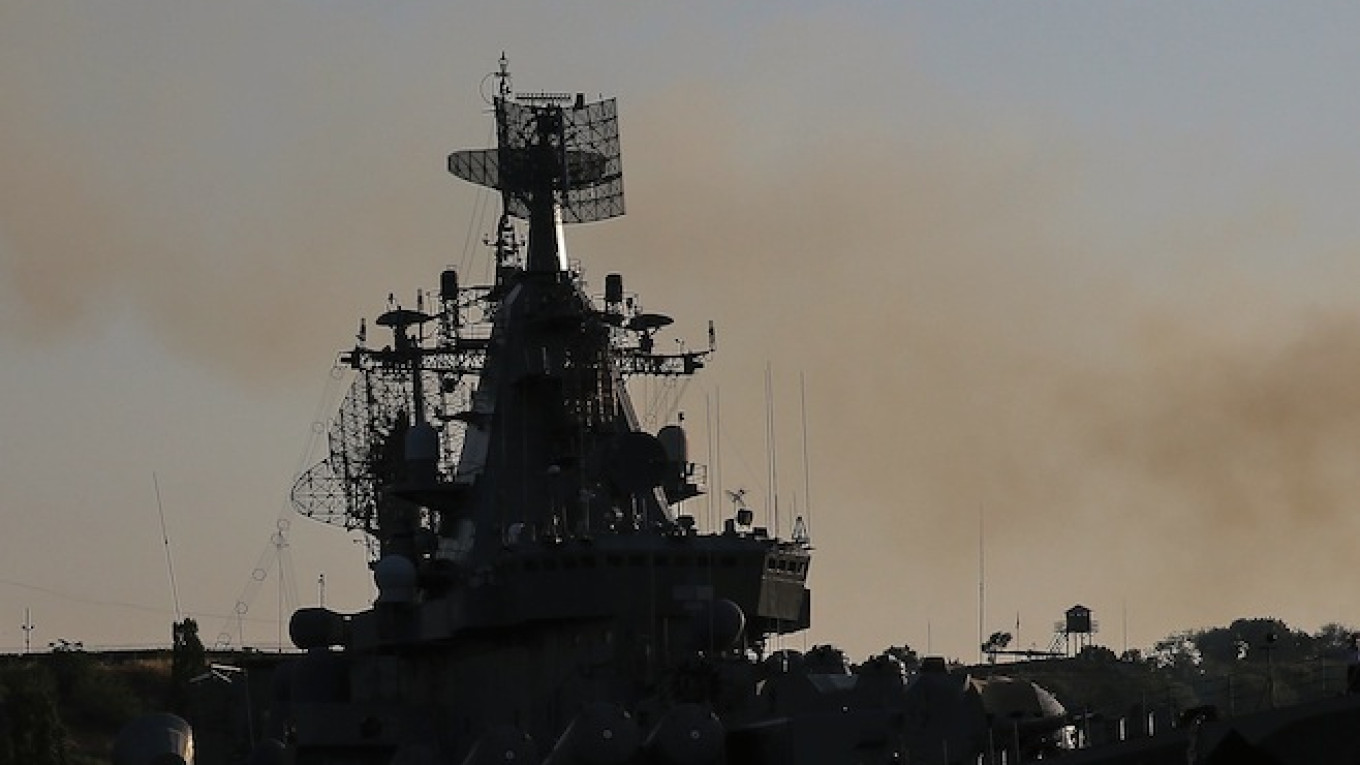Russian warships could blockade the coast of Syria and conduct naval artillery strikes on rebel and terrorist positions in the country, the head of the defense committee in the State Duma said Monday.
Russia began air strikes against the Islamic State and other armed groups in Syria on Wednesday following a rapid buildup of military equipment. Warships from Russia's Black Sea Fleet have conducted supply runs to Russian bases in Syria, but have not taken part in active combat.
This could change if rebel forces begin to take territory within range of Russian naval guns, said Vladimir Komoyedov, a retired Black Sea Fleet Admiral who heads the Duma's Defense Committee.
“[Naval] artillery strikes have not been ruled out, the ships are prepared,” the RIA Novosti news agency quoted Komoyedov as saying. “But there is no sense in doing this yet, the terrorists are located deep [in Syrian territory], where artillery can't reach them.”
Russia has stationed in the eastern Mediterranean several warships capable of launching guided missiles — the flagship missile cruiser Moskva, one destroyer, and two smaller frigates.
On Monday, these vessels practiced missile and artillery strikes on simulated sea and air targets, the TASS news agency reported, citing a spokesman for the Black Sea Fleet.
The missile drills came a day after the Black Sea Fleet vessels met up with units pulled from the Baltic and Northern Fleets to practice escort duties for Russian supply ships.
The speculation about Russian naval attacks comes amid reports that Russia is delivering ever more sophisticated weapons platforms to Syria.
On Monday, news website Lenta.ru reported that the military had delivered advanced Krasukha-4 electronic warfare systems. These units are used to jam enemy airborne radars, weapons guidance, communications, and unmanned aerial vehicles (UAVs).
The report cited a video published by the Defense Ministry's television network, Zevzda, in which a military unit strongly resembling a Krasukha-4 can be seen at the Latakia air base in Syria, from where Russia is coordinating its aerial campaign against Islamic State and other armed groups fighting against Syrian President.
The Krasukha system is relatively new, first entering service in 2012, and can blanket a 150-300 kilometer area with its electronic noise. It is not clear why this capability would be needed against the Islamic State and various anti-Assad rebel groups, which do not fly aircraft or UAVs.
It would, however, allow Russia to monitor and if necessary menace warplanes flown by the United States, Britain or France, all of which are flying over Syria, and help to deny these countries any chance of controlling Syrian airspace.
Contact the author at m.bodner@imedia.ru


